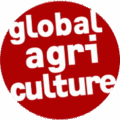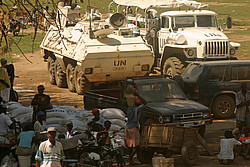
Modern agriculture is producing more food per capita than ever before. At the same time, according to estimates from the Food and Agriculture Organization, up to 757 million people are currently affected by hunger. An additional two billion people are suffering from micronutrient deficiencies, lacking key vitamins and minerals. In 2022, 2.5 billion people were overweight, of these 890 million were obese. Climate change is presenting an enormous new challenge for agriculture while the world population is predicted to increase to 9.7 billion by 2050. Whether clean water, fertile soils, forests, wetlands and other natural resources, as well as the biodiversity of the planet, will be available to future generations, in a condition that enables them to survive will depend crucially on the way we produce our food and on what we eat. An enormous share of human-induced greenhouse gas emissions result directly or indirectly from agricultural production and the subsequent processing, storage, transport and disposal of food. One-third of the world’s population obtains its livelihood from agriculture. Agriculture and food is by far the world’s largest business and therefore closely linked to sustainable development.
The IAASTD process
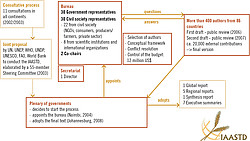
It was against this backdrop that the World Bank and the United Nations initiated a unique international scientific process (download the principles and procedures) to evaluate the state of global agriculture, its history and future: the International Assessment of Agricultural Knowledge, Science and Technology for Development (IAASTD), commonly known as the World Agriculture Report.
More than 400 scientists from all continents and a broad spectrum of disciplines worked together for four years with the aim of answering the following question:
“How can we reduce hunger and poverty, improve rural livelihoods and facilitate equitable, environmentally, socially and economically sustainable development through the generation of, access to, and use of agricultural knowledge, science and technology?”
For several decades, the World Bank had seriously neglected investments in the agricultural sector. The IAASTD was hence set up to take stock of global agricultural knowledge and evaluate where and how the World Bank could best invest in the agricultural development of the poorest countries. The aim was to find out which future approaches should be adopted by the 15 international agricultural research centers (CGIAR) administered by the World Bank and which role the controversial technique of genetic engineering should play in feeding the world’s hungry.
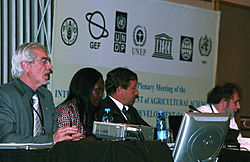
Professor Robert T. Watson, the then chief scientist at the World Bank, became the Director of and driving force behind the IAASTD. In the 1980s, he initiated NASA’s groundbreaking report on ozone depletion and from 1997 to 2002 he was Chair of the Intergovernmental Panel on Climate Change (IPCC). The structure and functioning of the IAASTD were very similar to the IPCC but with one fundamental difference: While the IPCC was only managed by government representatives, the participating states and UN institutions set up a Bureau for the IAASTD, comprising of 30 government representatives and 30 representatives from civil society. The latter included companies such as Syngenta and Unilever, and scientific institutions worked side by side with farmers, consumer groups and NGOs, such as Greenpeace and the Pesticide Action Network. This Bureau agreed on the basic questions to be answered and jointly selected the authors of the report, taking great care to achieve a well-balanced representation of all continents and genders, and different disciplines and backgrounds.
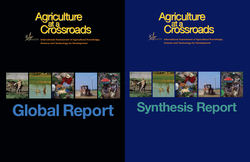
The IAASTD process brought together agronomists and economists with biologists and chemists, as well as ecologists, meteorologists, anthropologists, botanists, medical scientists, geographers, historians and philosophers. It also included some holders of traditional and local knowledge from diverse cultural backgrounds. This unique diversity of participants enabled a holistic perspective on all essential ecological, economic, social and cultural aspects of agriculture. The report strives for a historic perspective, which looks back over the past 50 years, but also for a future perspective, looking forward (as much as is possible) 50 years. Besides the global report, the IAASTD consists of five separate regional reports, as well as one synthesis report and seven executive summaries for decision makers which were adopted sentence by sentence by an intergovernmental plenary.
A new direction
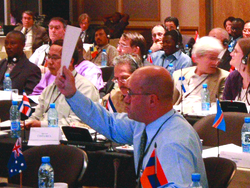
The IAASTD’s approach differed from a mere assessment of science and technology, that chooses certain solutions as a starting point and looks for the problems that could be solved with this technology. The IAASTD, by contrast, first identified key questions and main challenges in eleven public stakeholder consultations held in all continents in 2003, and then asked for available approaches to resolve them. The fact that all disciplines, stakeholders and cultures were included and that thousands of external comments were considered for the final version of the report was both an unusual and refreshing process for the highly specialised academic and technical experts. The venture of giving the final say in the wording of both the questions and answers of the report (except the summaries) to independent experts was also a new experience for the governments and UN institutions.
Withdrawal of genetic engineering companies
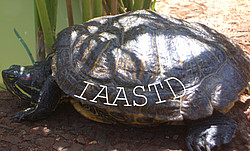
In early 2008, shortly before the final draft of the IAASTD was presented, both the company Syngenta and CropLife International (the association of global agrochemical companies) withdrew from the process in a last-minute decision. At the final plenary session in April 2008, three governments (USA, Canada and Australia) did not sign the report, although they welcomed the assessment as a “valuable and important contribution”. In both cases, the main motive was the critical assessment of genetic engineering, and industrial agriculture as compared to small-scale farming and the role of global trade with agricultural commodities. These late withdrawals did not affect the quality of the IAASTD but complicated the dissemination and acceptance of the report in some government, economic and scientific circles in the years that followed.
Business as usual is not an option
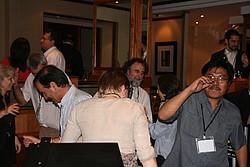
Despite these adversities, the IAASTD is a promising starting point and provides the opportunity for a new view and holistic discussion on the past and future of food and agriculture. It presents a clear message: “Business as usual is not an option!” This was the title of the press release announcing the adoption of the IAASTD by 58 governments in April 2008 in Johannesburg. The title of the report itself is “Agriculture at a Crossroads”: A thorough and radical overhaul of present international and national agricultural policies is necessary to meet the enormous challenges of the 21st century.
We cannot respond to the challenges of the coming decades with the methods of the past. The IAASTD does not offer so-called “silver bullet” solutions; in fact it warns us against believing such solutions exist, be they of technological, economic or political nature. Instead, it provides a comprehensive and interdisciplinary analysis of the state of agriculture and a wide range of promising approaches. The determined implementation of these possible solutions and a combination of approaches could help us overcome the current crisis.
